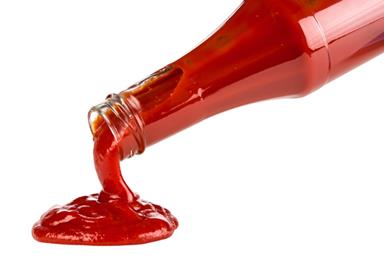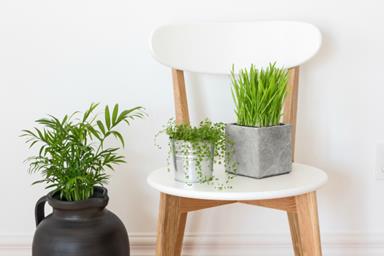10 Facts & Myths About Green Cleaning
Maintenance & Repair5 minutes read
5901 views
5901 views
Although detergents clean our floors and kitchen countertops effectively, they usually contain chemicals that pollute the environment when released as wastewater. Natural cleaning agents alleviate this issue, but the wide range of choices means it can often be confusing to figure out what works and what don’t in different situations. In the spirit of World Environment Day on Sunday (June 5), we invite a cleaning expert to give us a low-down on the facts and myths surrounding green cleaning.
|
THE CLEANING EXPERT
Photo: Helpling Roxanna Pelka, 31, partner manager at Helpling, an on-demand cleaning service provider that matches customers with cleaners registered on its online platform (think of it as the UberX of cleaning service). Pelka, who was Assistant Housekeeping Manager at Park Hyatt Maldives, leads the team in charge of recruiting cleaners. |
1. Coffee grounds unclog sink pipes – FALSE

Coffee grounds have all the textural subtlety of sandpaper – but that doesn’t mean you should flush them down your sink pipe to scrub it clean of leftover morsels. In fact, coffee grounds are one of the worst offenders, mixing with residue to become an impassable chunk that can only be removed by unscrewing the tube. Instead, try pouring four teaspoons of baking soda down the sink before adding a cup of vinegar. If you hear a fizz, rinse with boiling water.
2. Ketchup removes burnt stains from stainless steel – TRUE

Stainless steel pots and pans are usually coated with a tough layer of copper. During cooking, fire interacts with the copper to form copper oxide, which gives the base of a pot or a pan its notorious char. Ketchup, on the other hand, contains acetic acid, which attacks and banishes copper oxide. Pelka recommends spreading a generous layer of ketchup to the blackened area and letting it sit for 30 mins. The result is a gleaming surface.
3. Plants improve air quality – TRUE

At its most basic, plants take in carbon dioxide and release oxygen during the day, creating a more breathable environment. But they also remove formaldehyde, a colourless chemical (commonly found in paints, wallpapers, foam insulation and pressed-wood products) that turns into a toxic gas at room temperature. On a more tangible note, the foliage of plants such as ferns and orchids absorbs dust well. Regardless of the purpose, plants deserve a place in your home.
4. Vinegar cleans everything – FALSE

You may have heard that vinegar removes odour from clothes, and that it also kills bathroom germs. While both are true, vinegar doesn’t clean all surfaces. For example, natural stone countertops such as those made from granite and marble can become damaged over time if they are exposed to too much vinegar. The latter contains acetic acid, which weakens the seal surrounding the stone and allows water and other liquids to seep into the material.
5. Wearing gloves protects against bacteria – PARTIALLY TRUE

The insides of your gloves can be just as worrying as what’s outside of them if they aren’t kept dry after use. Humidity builds up under damp gloves, creating the perfect habitat for bacteria. To ensure that your gloves don’t go bad, place them in a warm water solution containing two teaspoons of vinegar and a little detergent for 10 to 15 mins after use. Subsequently, wring them thoroughly and store in a cool, dry place.
6. Sparkling water gets rid of beverage stains – PARTIALLY TRUE

If you’ve spilled wine or coffee on your shirt or carpet, quickly saturate the affected spot with sparkling water and blot (not rub) the area. Sparkling water works because it contains carbon dioxide, which dissolves tannin, a vegetable dye found in most beverages. However, the effectiveness of sparkling water varies. The higher the carbon dioxide content and the sooner the stain is treated, the more effective the sparkling water.
7. Lemon juice polishes chimney hoods – TRUE

Given its role in the kitchen, the chimney hood is a magnet for oil stains. Fortunately, rubbing just half a lemon all over it can quickly make it look like new again. Lemons have a high concentration of citric acid, which dislodges fats and oil. Pelka suggests using a cloth to gently wipe the chimney hood as opposed to using a sponge, which tends to scratch the metallic surface and render it less shiny than before.
8. Oil removes sticky residue – TRUE

Peeling off price stickers or masking tape can leave behind a gooey and stubborn stain, which can be dissolved by the fatty acids in oils. To start, mix olive oil with a pinch of salt in a bowl. Rub the resulting solution onto the sticky area with a kitchen cloth. After the residue is removed, clean with just a spritz of water and a little soap.
9. Coke unclogs toilet bowls – PARTIALLY TRUE

Photo: Screenshot / YouTube / Tomasz Profic
One of the most useful lessons to come out of us watching hours of YouTube videos is undoubtedly the technique of mixing Coke and Mentos to produce a high-pressure blast. While this pressure does work to clear blockages in the toilet bowl, the pipes might not be able to handle the impact in the long run. Instead, Pelka proposes a milder – but equally effective – method of pouring hot (not boiling) water from 1 metre away. The pressure created from the pour and the heat of the water combine to break up any erm, stuff blocking the way.
10. Toothpaste cleans silver cutlery - TRUE

Photo: unzippedtv.com
Over time, silver becomes tarnished due to oxidation. Unlike rust, blemished silver isn’t harmful, but some might not find it pretty either. A quick and easy way to prevent this is to polish your silverware with toothpaste (not gel) from time to time. Use your fingers or a soft cloth to ‘marinate’ your piece of silverware in toothpaste before rinsing it with warm water. Be sure to use basic toothpastes because those containing whitening bleach might be too abrasive for some pieces, especially silver-plated ones.
Request for quotes and we'll match you with a selection of Interior Designers!
Previous
He Builds Own Furnishings from Scraps


 Sign Up with Google
Sign Up with Google

.jpg)
